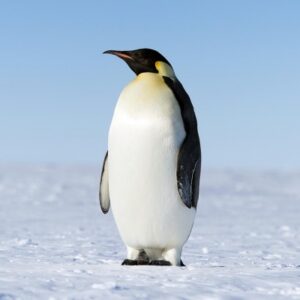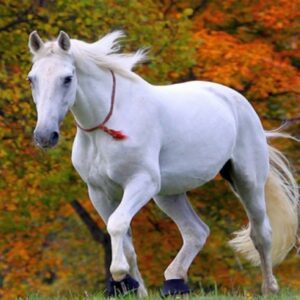Animals
MSNBC finishes first in primetime basic cable for first time ever
Temporibus autem quibusdam et aut officiis debitis aut rerum necessitatibus saepe eveniet ut et voluptates.


Quis autem vel eum iure reprehenderit qui in ea voluptate velit esse quam nihil molestiae consequatur, vel illum qui dolorem eum fugiat quo voluptas nulla pariatur.
Temporibus autem quibusdam et aut officiis debitis aut rerum necessitatibus saepe eveniet ut et voluptates repudiandae sint et molestiae non recusandae. Itaque earum rerum hic tenetur a sapiente delectus, ut aut reiciendis voluptatibus maiores alias consequatur aut perferendis doloribus asperiores repellat.
Lorem ipsum dolor sit amet, consectetur adipisicing elit, sed do eiusmod tempor incididunt ut labore et dolore magna aliqua. Ut enim ad minim veniam, quis nostrud exercitation ullamco laboris nisi ut aliquip ex ea commodo consequat.
Nemo enim ipsam voluptatem quia voluptas sit aspernatur aut odit aut fugit, sed quia consequuntur magni dolores eos qui ratione voluptatem sequi nesciunt.
Et harum quidem rerum facilis est et expedita distinctio. Nam libero tempore, cum soluta nobis est eligendi optio cumque nihil impedit quo minus id quod maxime placeat facere possimus, omnis voluptas assumenda est, omnis dolor repellendus.
Nulla pariatur. Excepteur sint occaecat cupidatat non proident, sunt in culpa qui officia deserunt mollit anim id est laborum.
Sed ut perspiciatis unde omnis iste natus error sit voluptatem accusantium doloremque laudantium, totam rem aperiam, eaque ipsa quae ab illo inventore veritatis et quasi architecto beatae vitae dicta sunt explicabo.
“Duis aute irure dolor in reprehenderit in voluptate velit esse cillum dolore eu fugiat”
Neque porro quisquam est, qui dolorem ipsum quia dolor sit amet, consectetur, adipisci velit, sed quia non numquam eius modi tempora incidunt ut labore et dolore magnam aliquam quaerat voluptatem. Ut enim ad minima veniam, quis nostrum exercitationem ullam corporis suscipit laboriosam, nisi ut aliquid ex ea commodi consequatur.
At vero eos et accusamus et iusto odio dignissimos ducimus qui blanditiis praesentium voluptatum deleniti atque corrupti quos dolores et quas molestias excepturi sint occaecati cupiditate non provident, similique sunt in culpa qui officia deserunt mollitia animi, id est laborum et dolorum fuga.


Animals
Top 10 Best Animals in the World – Wiki Top Ten


1. Dog


credit: th.bing.com
The domestic dog, scientifically known as Canis familiaris or Canis lupus familiaris, is a domesticated descendant of the wolf, distinguished by its distinctive upturned tail. Originating from an ancient, now-extinct wolf, the dog shares a close kinship with the contemporary wolf, which is its nearest living relative. Human hunter–gatherers initiated the domestication of dogs over 15,000 years ago, preceding the advent of agriculture. This early association with humans has led to a significant proliferation of domestic dogs, enabling them to adapt to a starch-rich diet, a feature unsuitable for other canids.
Through millennia of selective breeding, dogs have undergone significant transformations in behavior, sensory capabilities, and physical attributes. The array of dog breeds encompasses a wide spectrum of shapes, sizes, and colors. Dogs serve diverse roles for humans, including hunting, herding, pulling loads, providing protection, assisting law enforcement and the military, offering companionship, therapy, and aiding individuals with disabilities. The unique adaptation of dogs to human behavior over the centuries has prompted extensive research on the human-canine bond, earning them the endearing title of “man’s best friend.”
As of 2022, dogs are globally active and hold the status of one of the most popular domestic pets. With over 350 breeds, they continue to be an integral part of human society, influencing various aspects of our lives.
2. Cat


credit: th.bing.com
The cat (Felis catus) is a small carnivorous mammal and the sole domesticated species within the family Felidae. Commonly referred to as the domestic cat to distinguish it from its wild relatives, cats can be categorized as house cats, farm cats, or feral cats, the latter being those that roam freely and avoid human interaction.
Humans value domestic cats for companionship and their adeptness at controlling rodent populations. Various cat registries recognize approximately 60 cat breeds, each with its unique characteristics.
In terms of anatomy, domestic cats share similarities with other felid species, possessing a robust and flexible body, quick reflexes, sharp teeth, and retractable claws adapted for hunting small prey. They exhibit well-developed night vision and a keen sense of smell. Cat communication involves vocalizations such as meowing, purring, trilling, hissing, growling, and grunting, along with cat-specific body language. Cats are crepuscular, most active during dawn and dusk, and while they are solitary hunters, they are also social animals. Their hearing extends to sounds beyond human perception, including those produced by small mammals like mice. Additionally, cats secrete and respond to pheromones.
Female domestic cats can give birth to kittens from spring to late autumn, with litter sizes typically ranging from two to five kittens. Some cats are bred and showcased as registered pedigreed cats in events related to the hobby known as cat fancy. Despite efforts to control populations through spaying and neutering, the abandonment of pets has led to a significant number of feral cats globally, contributing to the endangerment of entire bird, mammal, and reptile species.
While the conventional belief was that cat domestication began in ancient Egypt around 3100 BC, recent advances in archaeology and genetics indicate that domestication occurred in Western Asia around 7500 BC.
As of 2021, there were an estimated 220 million owned and 480 million stray cats worldwide. In the United States, as of 2017, cats ranked as the second most popular pet, with 95.6 million owned, and approximately 42 million households had at least one cat. In the United Kingdom, 26% of adults were reported to have a cat, with an estimated pet cat population of 10.9 million as of 2020.
3. Wolf


credit: th.bing.com
The wolf (Canis lupus), also recognized as the gray or grey wolf, is a sizable canid indigenous to Eurasia and North America. Canis lupus encompasses over thirty subspecies, with the wild subspecies being gray wolves. As the largest existing member of the Canidae family, the wolf is distinguished by its less pointed ears and muzzle, a shorter torso, and a longer tail when compared to other Canis species. It shares a close relationship with smaller Canis species like the coyote and golden jackal, capable of producing fertile hybrids with them. The typical fur of a wolf displays a mottled pattern of white, brown, gray, and black, while Arctic subspecies may feature predominantly white fur.
Wolves stand out as the most specialized members of the Canis genus for cooperative game hunting. This specialization is evident in their physical adaptations for tackling large prey, their social nature, and advanced expressive behavior, including individual or group howling. Wolf packs typically consist of nuclear families comprising a mated pair and their offspring. Upon reaching sexual maturity or due to competition for resources, offspring may leave to form their packs. Territorial by nature, wolves engage in disputes over territory, a significant cause of mortality. Primarily carnivorous, their diet includes large wild hooved mammals, smaller animals, livestock, carrion, and garbage. Generally, single wolves or mated pairs are more successful hunters than larger packs. Wolves are susceptible to pathogens and parasites, with the rabies virus being particularly notable.
As of 2023, the global wild wolf population is estimated to be between 200,000 and 250,000, with the majority belonging to the gray wolf subspecies. The International Union for Conservation of Nature (IUCN) classifies this population as of Least Concern.
Wolves have a complex history with humans, often hunted in pastoral communities for livestock attacks, yet revered in certain agrarian and hunter-gatherer societies. Considered the ancestor of domestic dogs, wolves evoke fear in many societies, although most recorded attacks on humans are linked to rabid individuals. Due to their low numbers, remote habitats, and developed fear of humans stemming from encounters with hunters, ranchers, and shepherds, wolf attacks on humans are infrequent.
4. Tiger


credit: th.bing.com
The tiger (Panthera tigris) holds the distinction of being the largest living cat species and a member of the Panthera genus. Its most iconic features include dark vertical stripes on orange fur, along with a white underside. Functioning as an apex predator, the tiger predominantly preys on ungulates like deer and wild boar. Known for its territorial nature, it is generally a solitary yet social predator, necessitating extensive contiguous habitats to meet its prey and offspring-rearing needs. Tiger cubs typically stay with their mother for about two years before gaining independence and establishing their own home range.
Scientifically described in 1758, tigers once roamed extensively from the Eastern Anatolia Region in the west to the Amur River basin in the east, and from the foothills of the Himalayas to Bali in the Sunda Islands. However, since the early 20th century, tiger populations have witnessed a drastic decline, losing at least 93% of their historic range. They have been eradicated from Western and Central Asia, Java, Bali, and significant portions of Southeast and South Asia and China. Presently, the tiger’s range is fragmented, extending from Siberian temperate forests to subtropical and tropical forests on the Indian subcontinent, Indochina, and Sumatra.
Listed as Endangered on the IUCN Red List, the global wild tiger population, as of 2015, was estimated to range between 3,062 and 3,948 mature individuals, residing mainly in small isolated pockets. India hosts the largest tiger population. Key contributors to the decline include habitat destruction, fragmentation, poaching, and human–wildlife conflict, especially in regions with high human population density.
The tiger stands out as one of the world’s most recognizable and beloved charismatic megafauna. It holds a significant place in ancient mythology and folklore across its historic range, continuing to be featured in modern films and literature. The tiger appears on various flags, coats of arms, and serves as a mascot for numerous sporting teams. Notably, it holds the status of the national animal in India, Bangladesh, Malaysia, and South Korea.
5. Dolphin


credit: th.bing.com
A dolphin is an aquatic mammal classified within the infraorder Cetacea. Dolphin species are categorized into several families, including Delphinidae (oceanic dolphins), Platanistidae (Indian river dolphins), Iniidae (New World river dolphins), Pontoporiidae (brackish dolphins), and the extinct Lipotidae (baiji or Chinese river dolphin). There are currently 40 recognized dolphin species.
Dolphins exhibit a wide range in size, from the 1.7-meter-long (5 ft 7 in) and 50-kilogram (110-pound) Maui’s dolphin to the 9.5 m (31 ft 2 in) and 10-tonne (11-short-ton) orca. Sexual dimorphism is evident in various species, with males being larger than females. Their bodies are streamlined, and they possess two limbs modified into flippers. While not as flexible as seals, some dolphins can briefly reach speeds of 29 kilometers (18 mi) per hour or leap about 30 feet (9.1 m).
Conical teeth are used by dolphins to capture fast-moving prey, and they have well-developed hearing adapted for both air and water environments. Some dolphins can even survive if blind due to their highly developed hearing. Certain species are well-adapted for deep-sea diving, equipped with a layer of fat or blubber under the skin to stay warm in cold water.
Dolphins are widespread, with most species favoring warm tropical waters, though exceptions like the right whale dolphin thrive in colder climates. Their diet primarily consists of fish and squid, with some, like the orca, feeding on large mammals such as seals. Male dolphins typically mate with multiple females annually, while females mate every two to three years. Calves are usually born in spring and summer, and mothers bear the responsibility of raising them. Some species of dolphins have mothers that fast and nurse their young for an extended period. Dolphins communicate using various vocalizations, often in the form of clicks and whistles.
Despite their widespread presence, dolphins face threats from activities such as dolphin drive hunting in places like Japan, as well as bycatch, habitat loss, and marine pollution. Dolphins hold cultural significance globally and are featured in literature and film, as seen in the Free Willy film series. Some dolphins are kept in captivity, primarily bottlenose dolphins, and trained to perform tricks, while there are approximately 60 orcas in captivity.
6. Penguin


credit: th.bing.com
Penguins, belonging to the order Sphenisciforme and family Spheniscidae, constitute a group of aquatic flightless birds primarily inhabiting the Southern Hemisphere. The Galápagos penguin stands as the sole exception, being the only species found north of the Equator. Exceptionally adapted for aquatic life, penguins showcase countershaded dark and white plumage along with flippers for proficient swimming. Their diet consists mainly of krill, fish, squid, and other marine organisms, which they skillfully catch with their bills and swallow whole while navigating the waters. Penguins are equipped with a spiny tongue and robust jaws that aid in gripping slippery prey.
These remarkable birds divide their time almost equally between land and sea. The Emperor penguin (Aptenodytes forsteri) claims the title of the largest living species, with adults averaging around 1.1 meters (3 ft 7 in) in height and weighing approximately 35 kilograms (77 lb). Conversely, the little blue penguin (Eudyptula minor), also known as the fairy penguin, holds the distinction of the smallest penguin species, standing at around 33 centimeters (13 in) tall and weighing 1 kilogram (2.2 lb). In contemporary times, larger penguins are typically found in colder regions, while their smaller counterparts inhabit areas with temperate or tropical climates. Notably, some prehistoric penguin species reached remarkable sizes, comparable to adult humans in height and weight. The subantarctic regions once harbored a diverse array of penguin species, including at least one giant species in an area approximately 2,000 kilometers south of the equator around 35 million years ago, during a notably warmer climate than today.
7. Lion


credit: th.bing.com
The lion (Panthera leo), a significant feline of the Panthera genus, is indigenous to Africa and India. Sporting a robust, broad-chested physique, a short, rounded head, round ears, and a tuft of hair at the tail’s end, it exhibits sexual dimorphism, with adult males being larger and adorned with a prominent mane. Embracing a social nature, lions organize into prides, comprising a few adult males, related females, and cubs. Female lion groups typically collaborate in hunting, targeting primarily large ungulates. Recognized as an apex and keystone predator, lions may scavenge opportunistically and, on rare occasions, have been known to hunt humans, although this behavior is not typical.
Inhabiting grasslands, savannas, and shrublands, lions are generally more diurnal than other wild cats. However, when faced with persecution, they adapt to nocturnal and crepuscular activity. Historically, during the Neolithic period, lions roamed across Africa, Southeast Europe, the Caucasus, Western Asia, and northern parts of India. Presently, their range has been reduced to fragmented populations in sub-Saharan Africa and a single population in western India. Classified as Vulnerable on the IUCN Red List since 1996, lion populations in African countries have witnessed a decline of approximately 43% since the early 1990s. The primary contributors to this decline are habitat loss and conflicts with humans.
The lion stands as one of the most universally recognized animal symbols in human culture, prominently featured in sculptures, paintings, national flags, and contemporary films and literature. Since the time of the Roman Empire, lions have been kept in menageries, becoming sought-after species for exhibition in zoological gardens worldwide since the late 18th century. Cultural depictions of lions held significance in Ancient Egypt, and representations have been prevalent in virtually all ancient and medieval cultures within the lion’s historical and current range.
8. Horse


credit: th.bing.com
The horse, an odd-toed, hoofed mammal belonging to the taxonomic family Equidae, features a sole major subspecies (Equus ferus caballus) that has been domesticated, although remnants of wild subspecies have endured into the modern era. All subspecies, including the two currently existing ones, trace their lineage back to the Pleistocene Equus ferus. The horse’s evolutionary journey spans 45 to 55 million years, transforming from a small, multi-toed creature, Eohippus, into the large, single-toed animal we recognize today. Human efforts to domesticate horses began around 4000 BC, with widespread domestication believed to have occurred by 3000 BC. While horses in the caballus subspecies are domesticated, certain populations live in the wild as feral horses, distinct from true wild horses that have never been domesticated. A specialized vocabulary encompasses equine-related concepts, covering anatomy, life stages, size, colors, markings, breeds, locomotion, and behavior.
Horses possess adaptations for running, a crucial survival skill enabling them to swiftly escape predators. Their excellent sense of balance and strong fight-or-flight response contribute to this capability. A distinctive trait related to their need to flee is the ability to sleep both standing up and lying down, with younger horses exhibiting more sleep than adults. Mares, or female horses, carry their young for approximately 11 months, and foals, the young horses, can stand and run shortly after birth. Most domesticated horses commence training under a saddle or in a harness between the ages of two and four, reaching full adult development by age five, with an average lifespan of 25 to 30 years.
Horse breeds are loosely categorized based on temperament into spirited “hot bloods” emphasizing speed and endurance, “cold bloods” like draft horses suited for slow, heavy work, and “warmbloods” resulting from crosses between hot and cold bloods, often developed for specific riding purposes. With over 300 breeds worldwide, horses have been selectively bred for various uses.
Horses engage with humans in sport competitions, recreational pursuits, and working activities such as police work, agriculture, entertainment, and therapy. Historically integral to warfare, horses contributed to diverse riding and driving techniques using various equipment and control methods. Derived products include meat, milk, hide, hair, bone, and pharmaceuticals extracted from pregnant mare urine. Domesticated horses receive care, including food, water, shelter, and attention from specialists like veterinarians and farriers.
9. Fox


credit: th.bing.com
Foxes, characterized as small to medium-sized members of the Canidae family, share their familial ties with jackals, wolves, and domestic dogs. Within the broader category of foxes, only 12 out of the 37 species are recognized as true Vulpes. Their dietary preferences encompass a variety of small mammals, birds, reptiles, frogs, eggs, insects, worms, fish, crabs, mollusks, fruits, berries, vegetables, seeds, fungi, and carrion. Notable species among foxes include the fennec fox, red fox, gray fox, arctic fox, and swift fox. Renowned for their adaptability, foxes exhibit the ability to thrive on nearly every continent, showcasing a diverse range of colors and habitats. Their fur can display deep red, light tan, or white hues, with the occasional sighting of a rare black fox considered a remarkable and special occurrence.
10. Elephant


credit: th.bing.com
Elephants stand as the largest terrestrial animals, with three currently recognized living species: the African bush elephant, the African forest elephant, and the Asian elephant. They are the sole survivors within the family Elephantidae and the order Proboscidea, with extinct relatives including mammoths and mastodons. Distinguishing features of elephants encompass a lengthy proboscis known as a trunk, tusks, large ear flaps, pillar-like legs, and resilient yet sensitive skin. The trunk serves multiple functions, including breathing, transporting food and water to the mouth, and grasping objects. Tusks, derived from incisor teeth, function as both weapons and tools for manipulating objects and digging. Large ear flaps aid in regulating body temperature and communication, with African elephants exhibiting larger ears and concave backs, while Asian elephants have smaller ears and convex or level backs.
Elephants inhabit diverse regions, ranging from sub-Saharan Africa to South Asia and Southeast Asia, occupying various habitats like savannahs, forests, deserts, and marshes. Considered keystone species, they significantly impact their environments. Elephants maintain a fission-fusion society, where multiple family groups converge for socialization. Female elephants (cows) often form family groups led by the oldest female, or matriarch. Male elephants (bulls) leave family groups at puberty, either living solitarily or with other males. Adult bulls engage with family groups during mating, entering a heightened state of testosterone and aggression called musth for dominance and reproductive success. Calves, central to family groups, depend on their mothers for up to three years. Elephants boast a potential lifespan of up to 70 years in the wild, utilizing touch, sight, smell, and sound, including infrasound and seismic communication over long distances for communication. Elephant intelligence has been likened to that of primates and cetaceans, demonstrating self-awareness and empathy, especially towards dying and deceased family members.
The International Union for Conservation of Nature (IUCN) classifies African bush elephants and Asian elephants as endangered, while African forest elephants are critically endangered. The ivory trade poses a substantial threat to elephant populations, leading to poaching for tusks. Other challenges include habitat destruction and conflicts with local communities. Elephants are utilized as working animals in Asia, with historical roles in warfare and controversial appearances in zoos or circuses for entertainment today. These highly recognizable creatures have left an indelible mark in art, folklore, religion, literature, and popular culture.
-



 Lifestyle4 months ago
Lifestyle4 months agoTop 10 Best Online Therapy Services in 2024 – Wiki Top Ten
-













 Books7 years ago
Books7 years agoThe final 6 ‘Game of Thrones’ episodes might feel like a full season
-





 World2 months ago
World2 months agoTop 10 Largest Religions in the World
-



 Consumer Services4 months ago
Consumer Services4 months agoTop 10 Best Airlines 2023 By Ranking – Wiki Top Ten
-
Food and Drink2 months ago
Top Ten World’s Largest Cities By Population – Wiki Top Ten
-













 Consumer Services7 years ago
Consumer Services7 years agoCongress rolls out ‘Better Deal,’ new economic agenda
-





 People2 months ago
People2 months agoTop 10 most expensive players in IPL 2024
-













 People7 years ago
People7 years agoTop 10 Most Hated People of 2024

